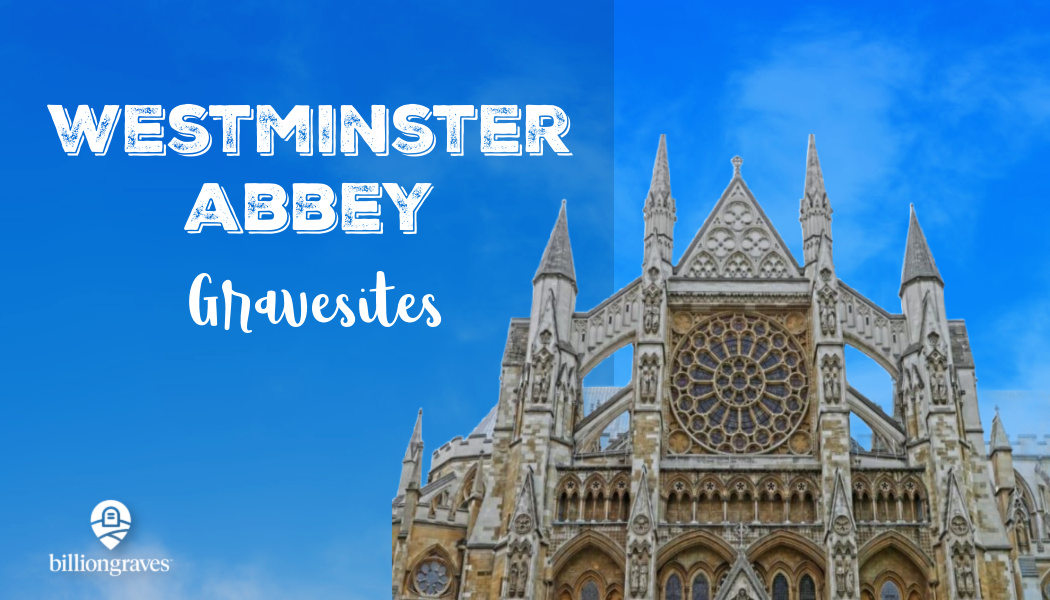Westminster Abbey gravesites are the final resting places for more than 3,300 notable people.
Who can be buried at Westminster Abbey? Someone once said, “I once started to research this very question. But on discovering that the first requirement is that you have to be dead, I lost interest.”
But seriously, most of those who are buried at Westminister Abbey have lived remarkable lives – scientists, inventors, writers, poets, musicians, composers, and 30 of England’s kings and queens.
Westminster Abbey: The Royal Church
Westminster Abbey was founded in 960 AD. The structure has been updated and replaced several times and the current building is the third major one at the site.

It is England’s Royal Church – home to weddings, funerals, and the monarch’s coronation ceremonies which have been held here since the 11th century.
Here are some of the people buried in the Westminster Abbey gravesites:
Scientists at Westminster Abbey
Isaac Newton
Isaac Newton (1642 – 1727) is considered to be one of the most influential scientists of all time, alongside greats such as Albert Einstein, Aristotle, and Galileo. Even Albert Einstein said that Isaac Newton was the smartest person that ever lived.
Newton was born in Woolsthorpe, England on Christmas day 1642, as the only son of Isaac, a farmer, and his wife Hannah. His father died before he was born. His mother married again and had three more children.
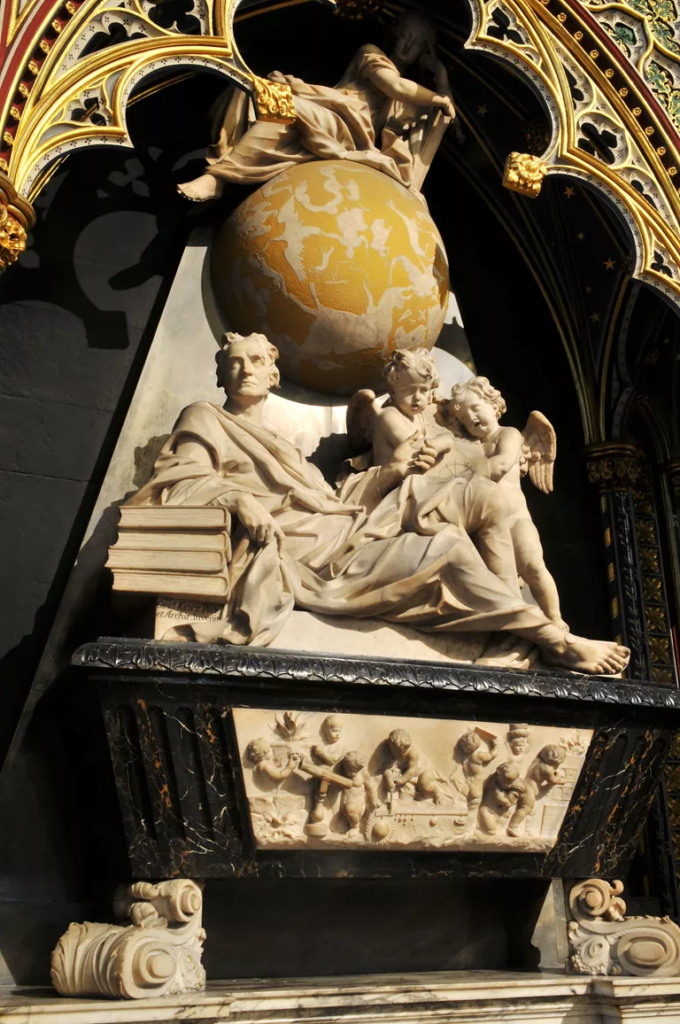
Some of Newton’s most famous scientific discoveries included:
Gravity – Newton’s theory about gravity helped to explain the movements of the planets and the sun and it is known today as Newton’s law of universal gravitation.
Laws of Motion – Newton’s laws of motion were three fundamental laws of physics.
1) an object will not change its motion unless a force acts on it
2) the force on an object is equal to its mass times its acceleration
3) when two objects interact, they apply forces to each other of equal magnitude and opposite direction
Calculus – Newton invented calculus, a type of math used in advanced engineering and science.
Reflecting Telescope – This type of telescope uses mirrors to reflect light and form an image. Almost all of the major telescopes used in astronomy today are reflecting telescopes.

Newton died on March 20th, 1726. The inscription on his gravestone reads, “Qui genus humanum ingenio superavit” which translates to, “He surpassed the race of man in understanding.”
And his epitaph says, “Here is buried Isaac Newton, knight, who by a strength of mind almost divine, and mathematical principles peculiarly his own, explored the course and figures of the planets, the paths of comets, the tides of the sea, the dissimilarities in rays of light, and, what no other scholar has previously imagined, the properties of the colors thus produced. Diligent, sagacious, and faithful, in his expositions of nature, antiquity, and the holy scriptures, he vindicated by his philosophy the majesty of God mighty and good, and expressed the simplicity of the Gospel in his manners. Mortals rejoice that there has existed such and so great an ornament of the human race!”
Stephen Hawking
Another brilliant scientist that is buried at Westminster Abbey is Stephen Hawking (1942 – 2018), a theoretical physicist, author, and cosmologist. At the time of his death, he was the director of research at the Centre for Theoretical Cosmology at the University of Cambridge.

Hawking was born in Oxford, England into a family of physicians where education was prized.
Hawking’s research expanded the knowledge of black holes, stars, and the universe.

At the age of 21, Hawking was diagnosed with amyotrophic lateral sclerosis – ALS, for short – which gradually left him paralyzed over the succeeding decades.
After Hawking lost his ability to talk, he communicated through a speech-generating device through a handheld switch and later by using only a single muscle in his cheek.
Even though at the time of his diagnosis, Hawking was told he likely only had 2 years to live, he went on to live to the age of 76. He is buried in the Scientist’s Corner of Westminster Abbey between Sir Isaac Newton and Charles Darwin. His epitaph simply reads, “Here lies what was mortal of Stephen Hawking”.
Musicians at Westminster Abbey
George Frederick Handel
George Frederick Handel (1685 – 1759) was a composer known for his stirring operas, oratorios, anthems, and organ concertos.
Handel received his education as a composer in Germany and worked in Italy before settling in London, where he spent most of his career. He is recognized as one of the greatest composers of the Baroque period.
Handel mixed music with business as he started three commercial opera companies to supply the English nobility with Italian operas.

At the age of 52 – following a stroke – Handel shifted his creative direction and began composing English choral works for the middle class. After his incredible success with the Messiah, he never composed an Italian opera again.
Handel also wrote four coronation anthems – music to be played when British monarchs were crowned. His anthem Zadok the Priest, has been performed at every British coronation since 1727 (think “God save the King” and “Long Live the King”).

As he aged, Handel developed cataracts. Operations failed to restore his vision and left him completely blind.
On April 6th, 1759, Handel became ill while directing a performance of “The Messiah”. A few days later, he died at his home in London.
About 3,000 people attended his funeral. Music was performed by the choirs from Westminster Abbey, St. Paul’s Cathedral, and the Chapel Royal.
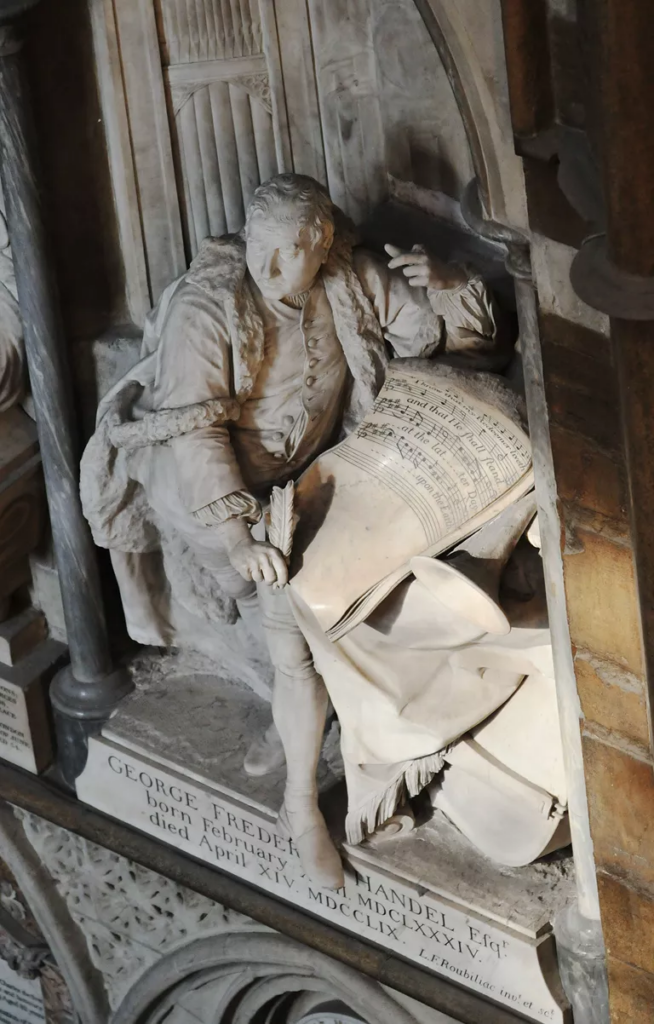
On Handel’s grave at Westminster Abbey, there is a statue of the great composer at work writing “The Messiah”. The score is open at the passage “I know that my redeemer liveth.”
When Ludwig van Beethoven, was asked to name the greatest composer ever, he is said to have responded, “Handel, to him I bow the knee.”
Authors at Westminster Abbey
Charles Dickens
It was Charles Dickens (1812 – 1870) who made characters like Oliver Twist, Ebenezer Scrooge, and David Copperfield household names.
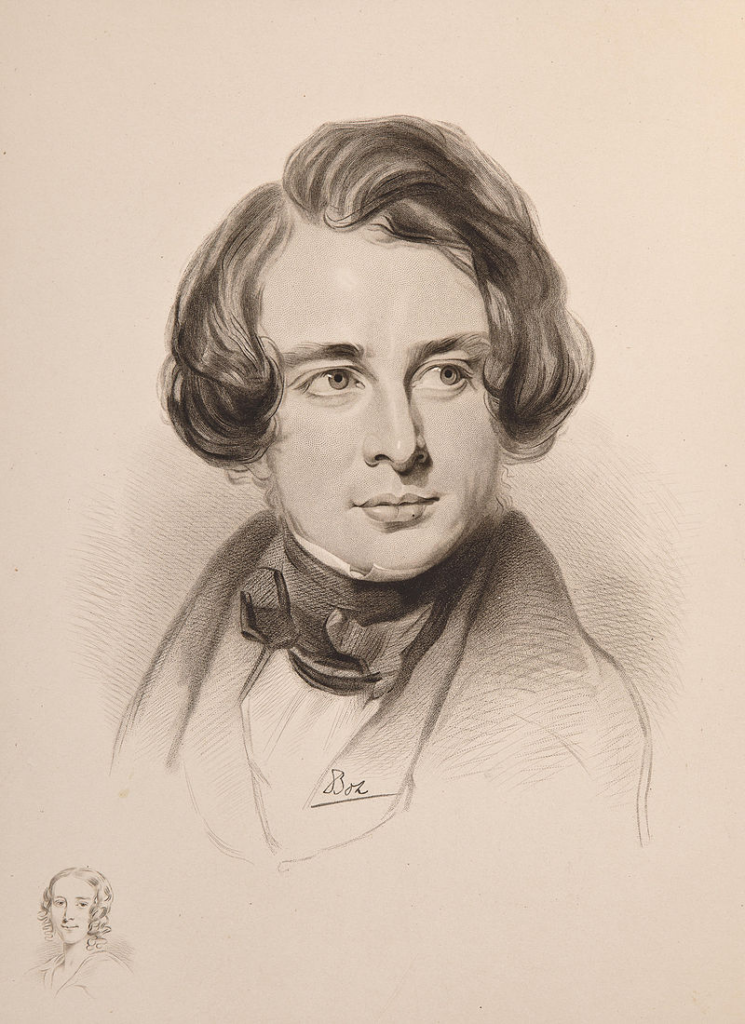
When Dickens was just 12 years old, his father was put in a debtors’ prison so he had to leave school to work in a factory pasting labels on shoe polish containers to provide for the family.
Even though he did not have a formal education, Dickens eventually found work editing a weekly journal for 20 years. He also wrote 15 novels, 5 novellas, hundreds of short stories, and non-fiction articles, lectured, performed many readings, and was an avid letter writer.
He also used his gift for writing to advocate for children’s rights and education.

Dickens had wanted a simple burial in his local churchyard but burials were not being allowed there at the time.
The public voiced their opinions through the newspaper, that a man of Dicken’s caliber should be buried at Westminster Abbey. And so it was.
The funeral was simple – just 12 mourners attended – family, friends, and the Westminster Abbey clergy. His gravestone was also very humble. It read:
CHARLES DICKENS
BORN 7th FEBRUARY 1812
DIED 9th JUNE 1870
This was his own wish, as expressed in his will, saying, “my name be inscribed in plain English letters on my tomb . . . I rest my claims to the remembrance of my country upon my published works.”
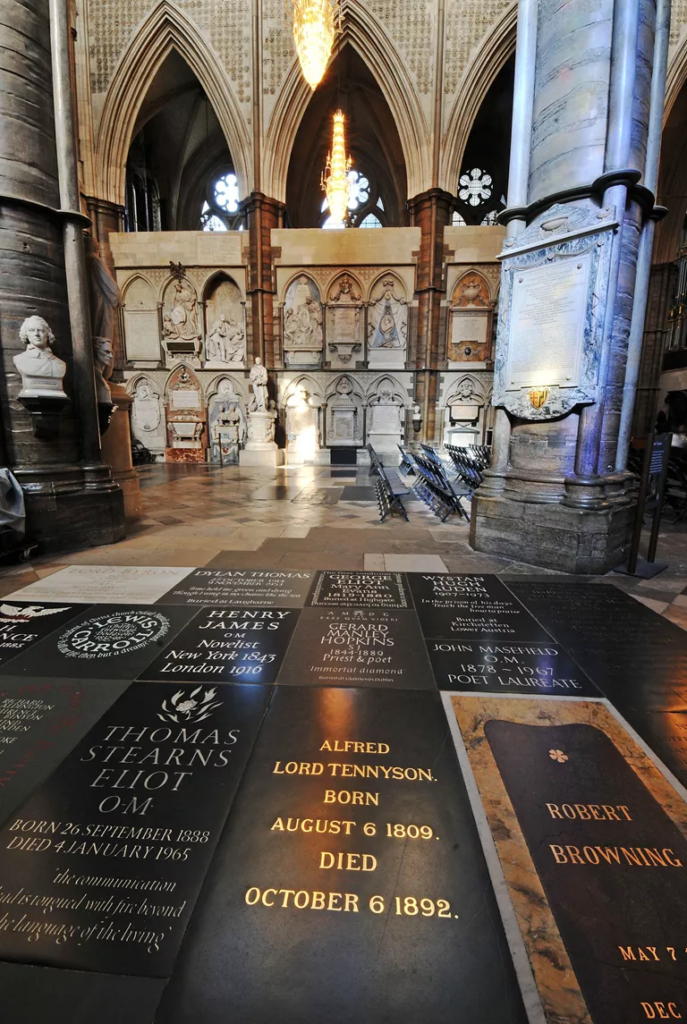
Dickens is buried at Westminster Abbey in the Poet’s Corner among the likes of Lord Albert Tennyson, Robert Browning, and T.S. Eliot.
William Shakespeare
William Shakespeare (1564 – 1616) is widely recognized as the greatest playwright in the western world. He has been dubbed England’s national poet and the “Bard of Avon”.

Shakespeare is actually buried in Holy Trinity Church, Stratford upon Avon in Warwickshire but a monument was erected in his honor at Westminster Abbey 124 years after his death.
Some thought that his remains should have been moved to Westminster Abbey in recognition of his great achievements. But the epitaph carved into the stone slab that covers Shakespeare’s grave deterred them. It is a curse against moving his bones. The curse (with modernized spelling) reads:
Good friend, for Jesus’ sake forbear,
To dig the dust enclosed here.
Blessed be the man that spares these stones,
And cursed be he that moves my bones.

The Shakespeare monument at Westminster Abbey features a statue of the writer leaning on three books and a scroll. At the base of the statue, there are several carvings – the heads of three royals (symbolic of power), a dagger (symbolic of tragedy), a wreath (symbolic of immortality), and a mask (symbolic of drama).
Click HERE to read more about William Shakespeare and his final resting place.
Politicians at Westminster Abbey
Winston Churchill
Winston Churchill (1874 – 1965) was the Prime Minister of the United Kingdom, author, and soldier. He is best remembered for his leadership during World War II.

Churchill was also an amazing orator. He won the Nobel Prize in literature — in part for his mastery of speechmaking. He said that for every minute of his speeches, he spent one hour in preparation.
These are some of his famous quotes:
- Success is not final, failure is not fatal: it is the courage to continue that counts.
- If you’re going through hell, keep going.
- Attitude is a little thing that makes a big difference.
- Never give in. Never give in. Never, never, never.
- We make a living by what we get, but we make a life by what we give.

Although Churchill’s body lies at rest in his family’s burial plot at Bladon Churchyard, there is a memorial in his honor at Westminster Abbey that was unveiled by Queen Elizabeth II.
William Wilberforce
William Wilberforce (1759 – 1833) enthusiastically took up the cause for the abolition of slavery. For nearly 20 years and against great opposition, he campaigned until the abolition bill received royal assent and became law in 1807.

Wilberforce is buried at Westminster Abbey next to his dear friend, Prime Minister William Pitt.
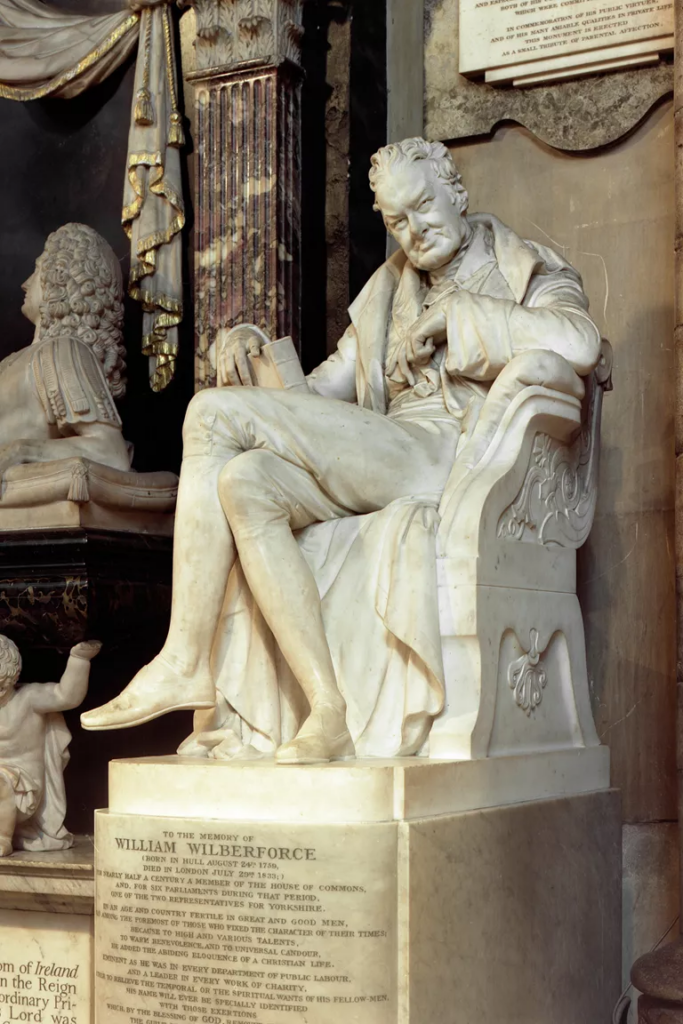
The inscription on his gravestone reads in part:
“He was among the foremost . . . a leader in every work of charity, whether to relieve the temporal or the spiritual wants of his fellowmen, . . . by the blessing of God, removed from England the guilt of the African slave trade and prepared the way for the abolition of slavery . . .
“He died not unnoticed or forgotten by his country . . . in solemn procession from their respective houses, carried him to his fitting place among the mighty dead around, here to repose: till, through the merits of Jesus Christ, his only Redeemer and Savior, . . . he shall rise in the resurrection of the just.
Royalty at Westminster Abbey
Mary Queen of Scots
Mary Stewart (1542 – 1587) became a queen when she was a baby when her father, the king of Scotland, died when she was just a few days old. Thus, she came to be known as Mary Queen of Scots.
However, Mary grew up hoping to also become the queen of another country – England. Her great-grandfather was Henry VII, King of England.

Mary was raised in the Catholic faith at a time when Scotland was predominantly Protestant. This difference led to her having many enemies so, at the age of 26, Mary fled to England hoping that her cousin Queen Elizabeth I would protect her.
However, Elizabeth did not trust Mary. She knew that Mary wanted to become queen of England so she had Mary put in prison.
Mary remained in prison for the rest of her life. While imprisoned, spies revealed that Mary was sending secret messages via letters as part of a plot to have Elizabeth killed. Mary was put on trial at the age of 44 and was found guilty. Elizabeth had Mary beheaded the following year.
Mary was originally buried at Peterborough Cathedral. In a strange twist of irony, when Elizabeth died, the heir to England’s throne was Mary’s son, James. And so, 25 years after his mother’s death, James had Mary’s remains moved to a place of honor in an elaborate tomb at Westminster Abbey.
Queen Elizabeth I
What about Queen Elizabeth I (1503 – 1633)? She was also buried at Westminster Abbey. In fact, her tomb is at the opposite end of the “Lady Chapel” from her cousin Mary, Queen of Scots.

This “Lady Chapel” had been built by their great-grandfather, Henry VII in the early 1500s. When it was built, it was called “the wonder of the world”. Its fan-vaulted ceiling continues to inspire wonder in those who visit it today.
Queen Elizabeth I reigned for 44 years as a very popular queen. She never married, so without children, there were no heirs to the throne from her direct line.
During her final years, Queen Elizabeth I expressed regret over decisions she had made during her reign – especially the execution of her cousin Mary, Queen of Scots.

When Queen Elizabeth I died at the age of 69, the likeness for her tomb was created from a death mask so it just may be the closest we’ll ever get to looking into the face of a queen!
A Pauper at Westminster Abbey
In the midst of all these great and noble people who left their mark on the world, there is a pauper named Ben Jonson (1572 – 1637). As a young man, he was a bricklayer. In his later years, he became a poet and actor. He died penniless.

As one version of the story goes, the Dean of Westminster was teasing Jonson about being buried in the Poet’s Corner.
Jonson is said to have replied, “I am too poor for that and no one will lay out funeral charges upon me. No, sir, six feet long by two feet wide is too much for me: two feet by two feet will do for all I want”.
The Dean replied, “You shall have it”. So Jonson was buried standing on his feet. He is the only person buried in an upright position in Westminster Abbey.
Volunteer to Take Gravestone Photos
Gravestone photos are being taken at Westminster Abbey with the BillionGraves app and we need your help to take photos of gravestones at your local cemetery! It is easy and done completely with your smartphone! Click HERE to get started.

Taking photos of gravestones with the BillionGraves app helps to preserve history!
You are welcome to do this at your own convenience, no permission from us is needed. If you still have questions after you have clicked on the link to get started, you can email us at Volunteer@BillionGraves.com. We’ll be happy to help you!
Are you planning a group service project? Email us at Volunteer@BillionGraves.com for more resources. We will help you find a cemetery that still needs to have photos taken.
Happy Cemetery Hopping!
Cathy Wallace

